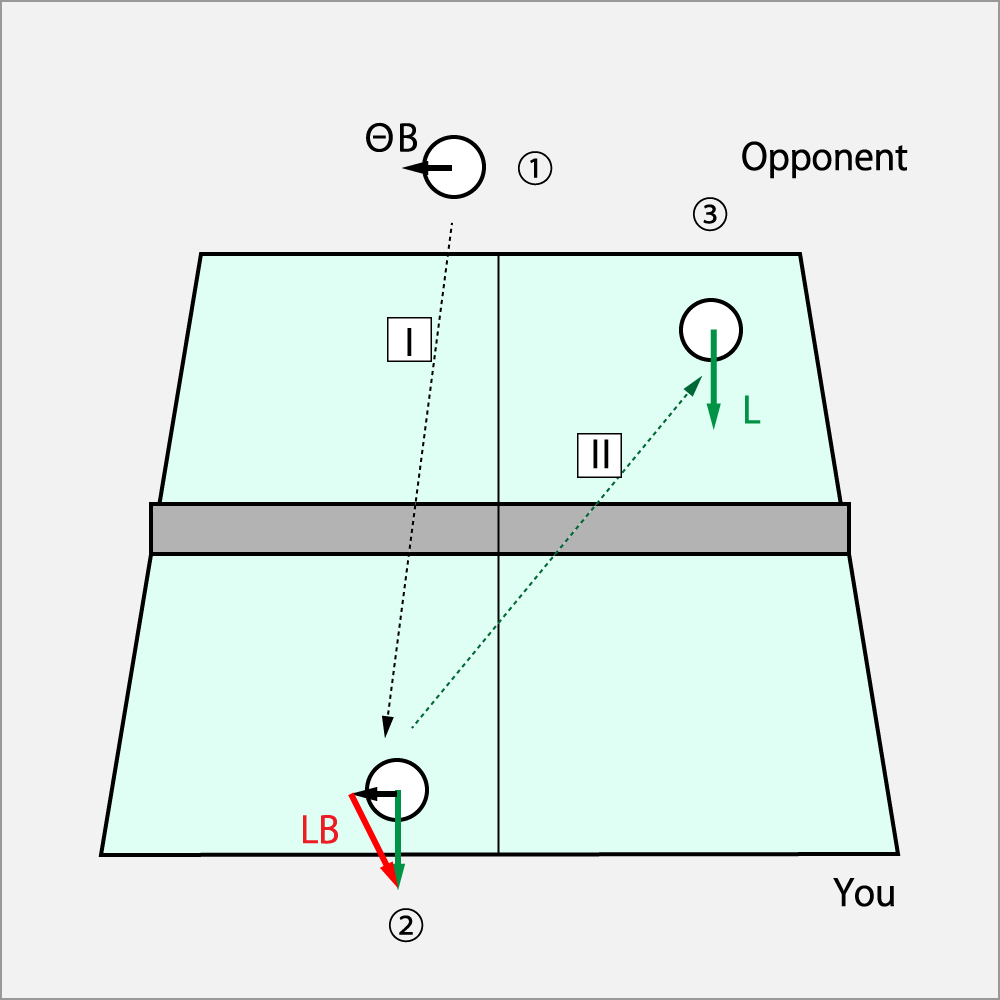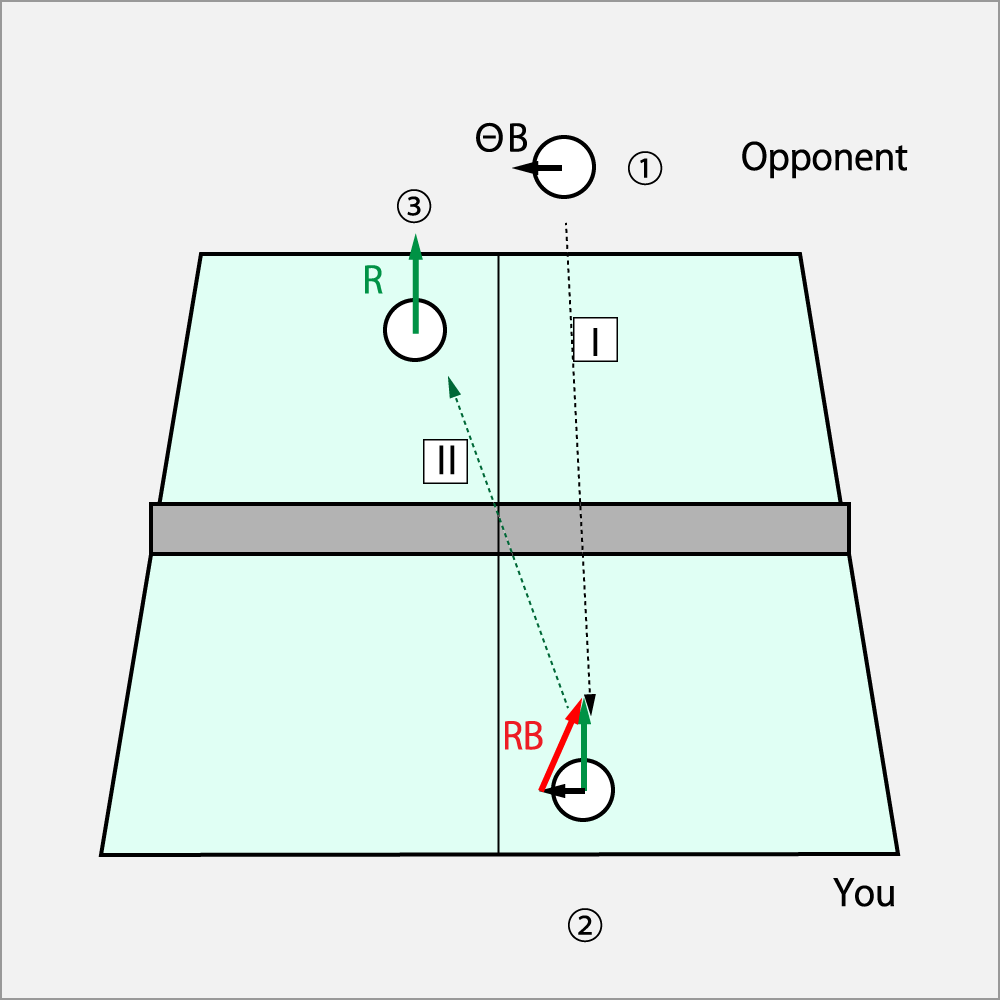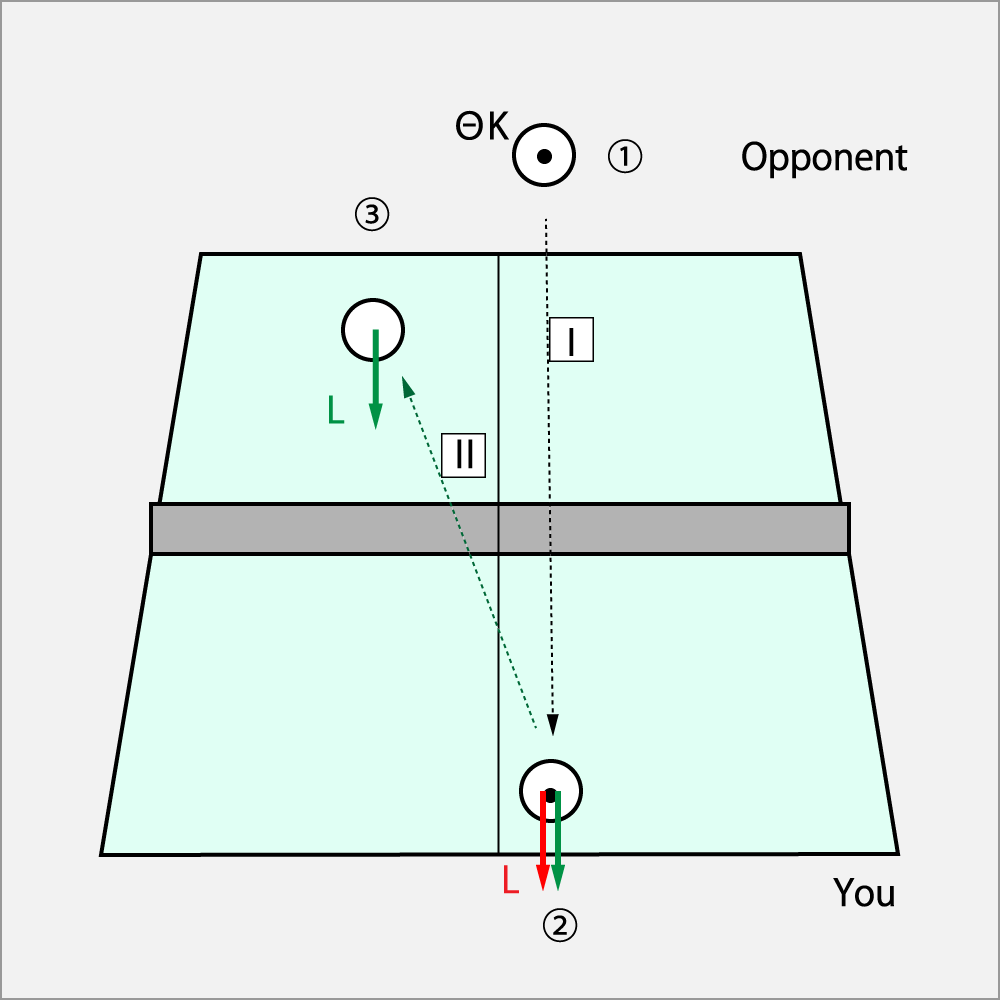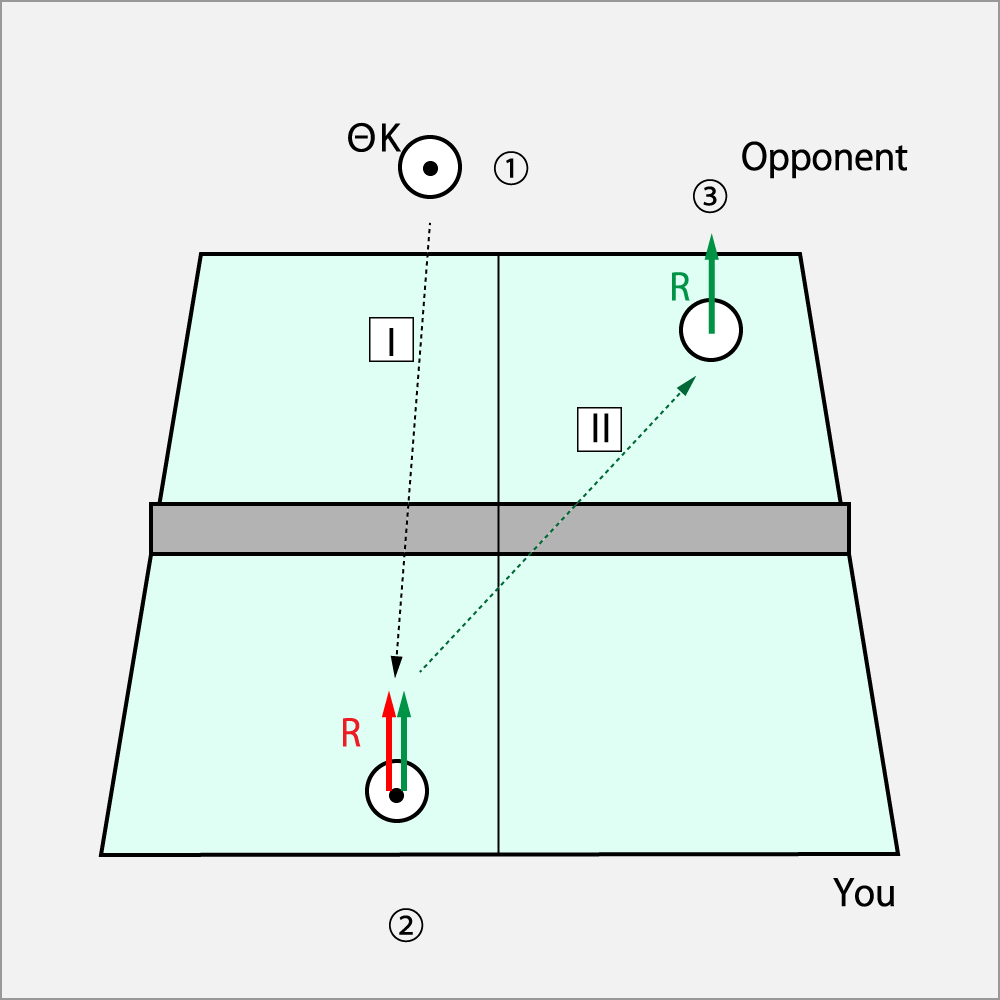Part 6. Tactics against Choppers
6.2. The Basic Tactics against Middle-position Chops
The spin kinds by the opponent's chop swing using inverted rubber at the middle position are almost a ΘCut, but if the opponent used the another kind of rubber, the degree of its spin depends on the type of rubber. So, you will have to select the additional spin corresponding to the spin of each rubber.
6.2.1. Make a Return against the Inverted Rubber
For the return ball from the middle of the Inverted rubber, add Hcork or Fcork spin and return the ball with Drive to continue the rally, and launch the third ball attack using The Sec 2.9.6 The Second Law of Third Pitch Attack, and I will show how to cut off the Cut rally and how to bang it.
6.2.1.1 Rally
(A). The Drive rally against the Forehand
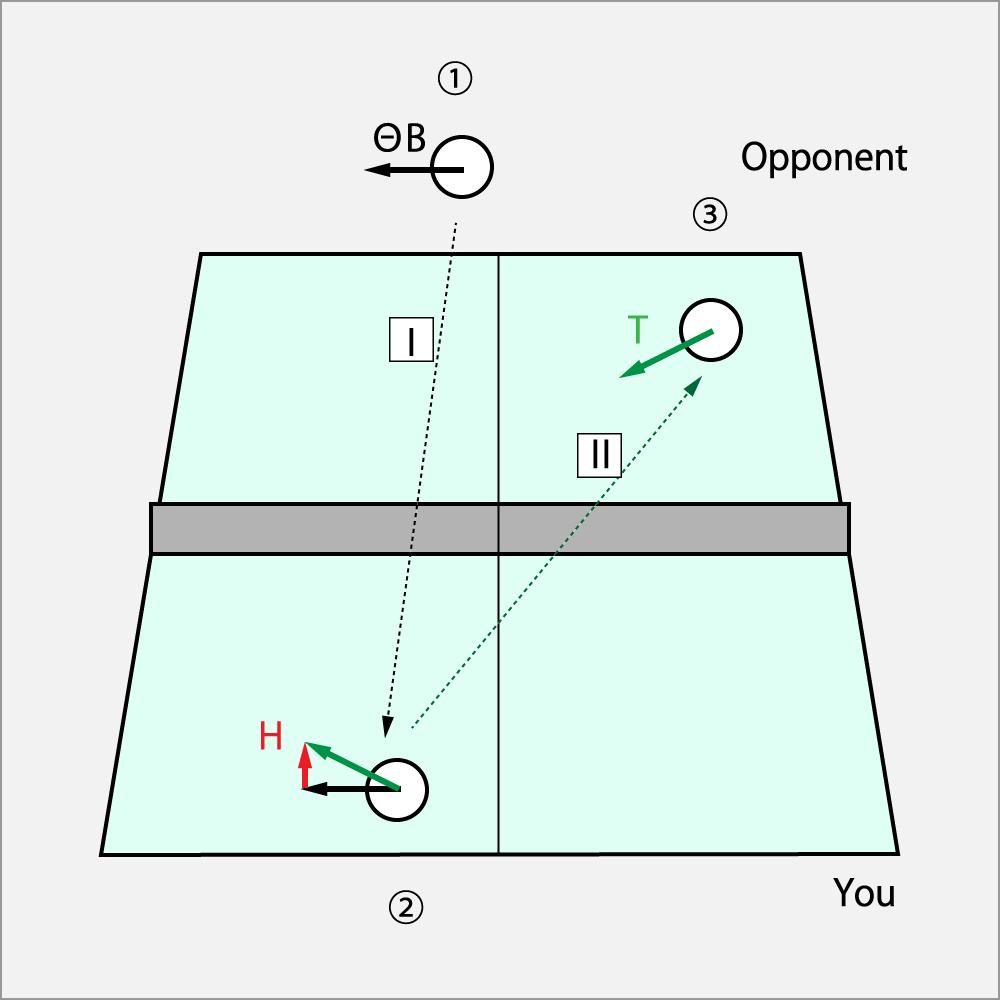
① The fore-middle Cut motion of the opponent's Inverted rubber is ΘCut (ΘB).
② You add a spin of Hcork to the spin on the Ⅰ in your court.
③ The ball will return with Drive (T) on the Ⅱ to the opponent's court.
Your swing to add the spin of Hcork (H) to the ΘCut (B) can control the ball easily since it rubs the axis of ball, which is a characteristic of this swing.
Swing example. Refer to 3.6.3. Keeping the rally with Choppers
(B). The Drive rally against the Backhand
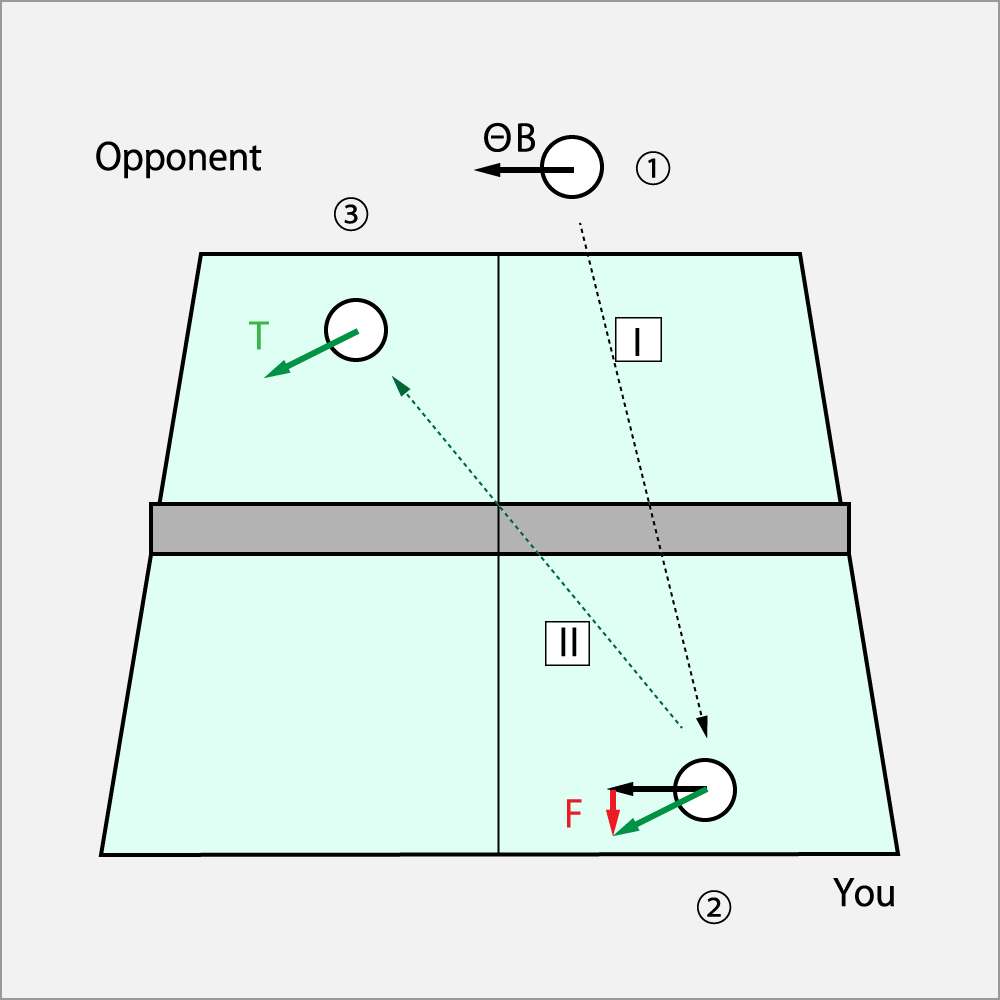
① The back-middle Cut motion of the opponent's Inverted rubber is ΘCut (ΘB).
② You add a spin of Fcork (F) to the spin on the Ⅰ in your court.
③ The ball will return with Drive (T) on the Ⅱ to the opponent's court.
Your swing to add the spin of Hcork (H) to the ΘCut (ΘB) can control the ball easily since it rubs the axis of ball, which is a characteristic of this swing.
Swing example. Refer to 3.6.3. Keeping the rally with Choppers
6.2.1.2 Third pitch attack from the rally using Inverted rubber
The Cut made by Inverted Rubber is difficult to punch out with Drive as it is, so you need to set the third pitch attack from the rally and punch out with Drive.
(A). Third pitch attack from Curve⋅Cut
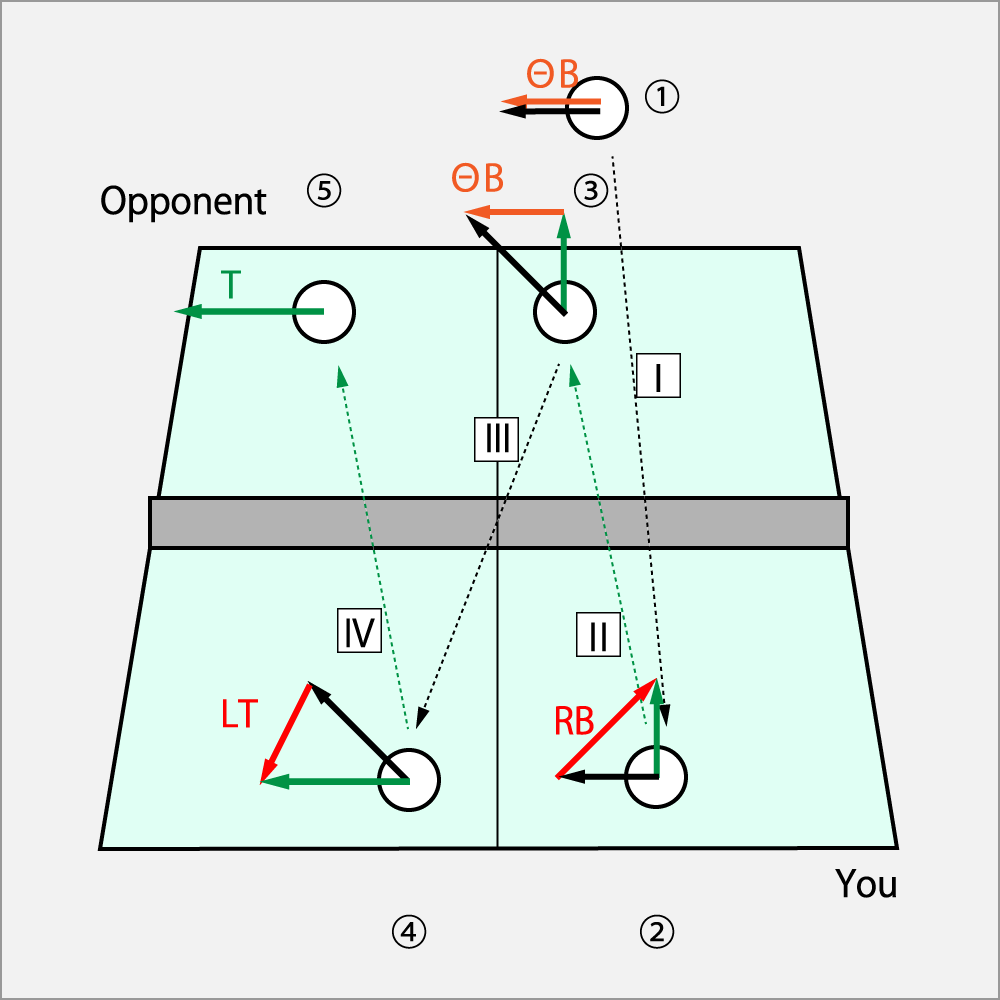
① The third pitch attack from a rally begins with the ΘCut (ΘB) of opponent.
② You add Curve⋅Cut (RB) to the spin on the Ⅰ which entered the court.
The ball becomes Curve (R) on the Ⅱ and is returned to the opponent's court.
③ If the opponent receives with ΘCut (ΘB) to it, the ball becomes ΘCurve⋅Cut (ΘRB) on the Ⅲ and comes back to your coat.
④ For the ΘCurve⋅Cut(ΘRB) which returned to your court, you swing with Shoot⋅Drive (LT), the ball becomes Drive on the Ⅳ, you can punch out at the ⑤.
The point of this third pitch attack is that you set it with Shoot⋅Cut (LB) then rewind it with Curve⋅Drive (RT).
(B). Third pitch attack from Shoot⋅Cut
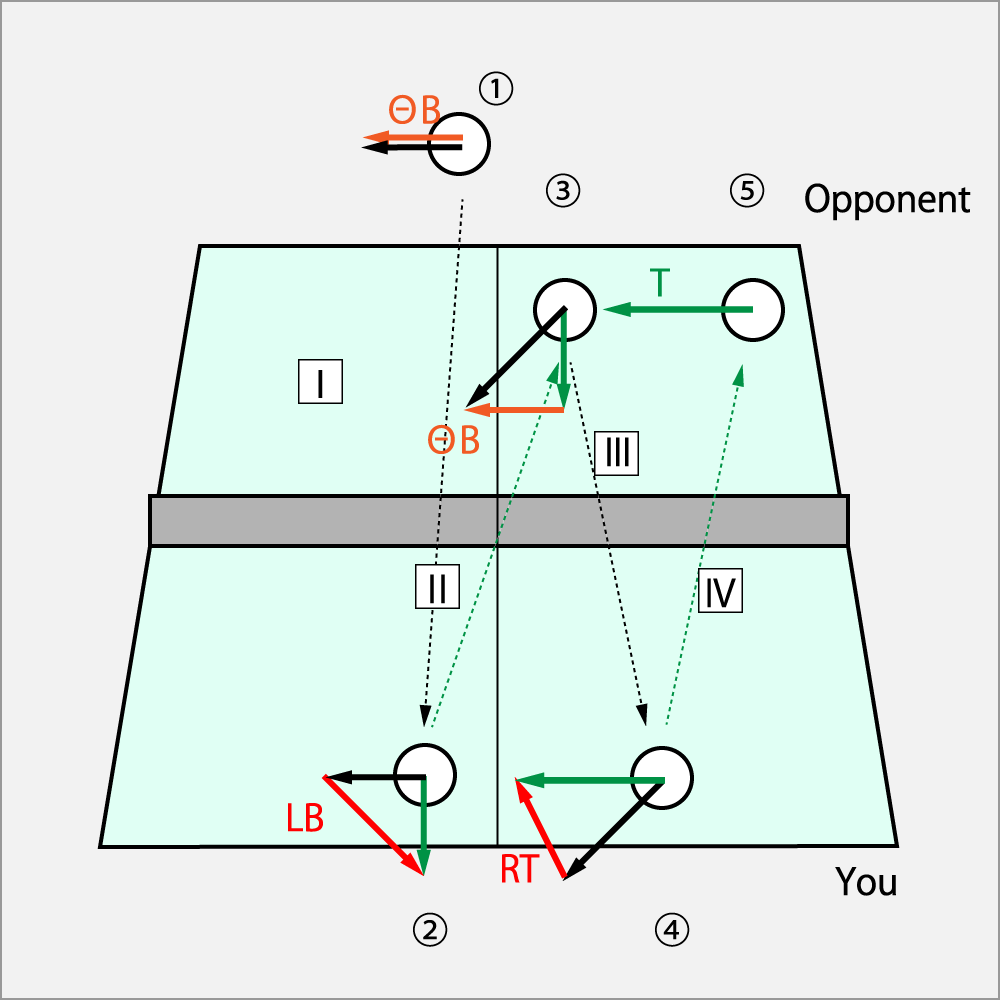
① The third pitch attack from a rally begins with the ΘCut (ΘB) of opponent.
② You add Curve⋅Cut (RB) to the spin on the Ⅰ which entered the court.
The ball becomes Curve (R) on the Ⅱ and is returned to the opponent's court.
③ If the opponent receives with ΘCut (ΘB) to it, the ball becomes ΘCurve⋅Cut (ΘRB) on the Ⅲ and comes back to your coat.
④ For ΘCurve⋅Cut (ΘRB) which returned to your court, you swing with Shoot⋅Drive (LT), you can punch out as Dirve (T) at the ⑤.
The point of this third pitch attack is that you set it with Shoot⋅Cut (LB) then rewind it with Curve⋅Drive (RT).
6.2.1.3. Direct Bang the Cut
This is an introduction to the technique of terminating the rally and aggressively attacking the moment the opponent issues a Cut. This tactic is a great threat to choppers. They don't know how to deal with it.
(A) Bang by Curve⋅Cut
Fig-5.2.1.3a
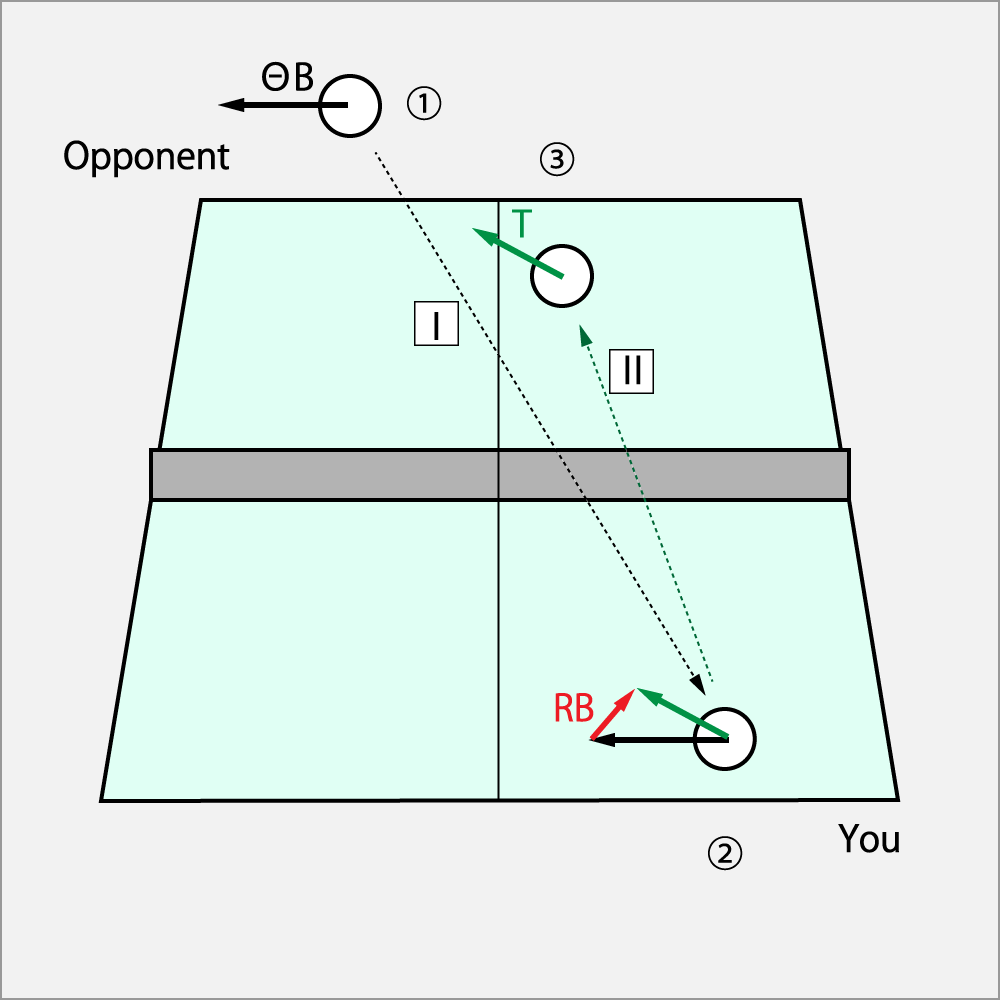
① The opponent rubbed the ball from the backhand side with a strong ΘCut (ΘB).
② You add a weaker Curv⋅Cut(RB) to the spin on the trajectory-1 entered your coat.
For giving a weaker Curve⋅Cut, the contact time can be shortened by raising the racket and giving spin on a earlier hitting position. You can swing it out without hesitation.
③ The ball will be returned as a Drive(T) on the trajectory-2 to the opponent's coat.
With this method, if the opponent is wearing sticky rubber, the Cut spin will be stronger, so the hitting ball from you will be more stable.
(B) Bang by Hcork⋅Curv⋅Drive
Fig-5.2.1.3b
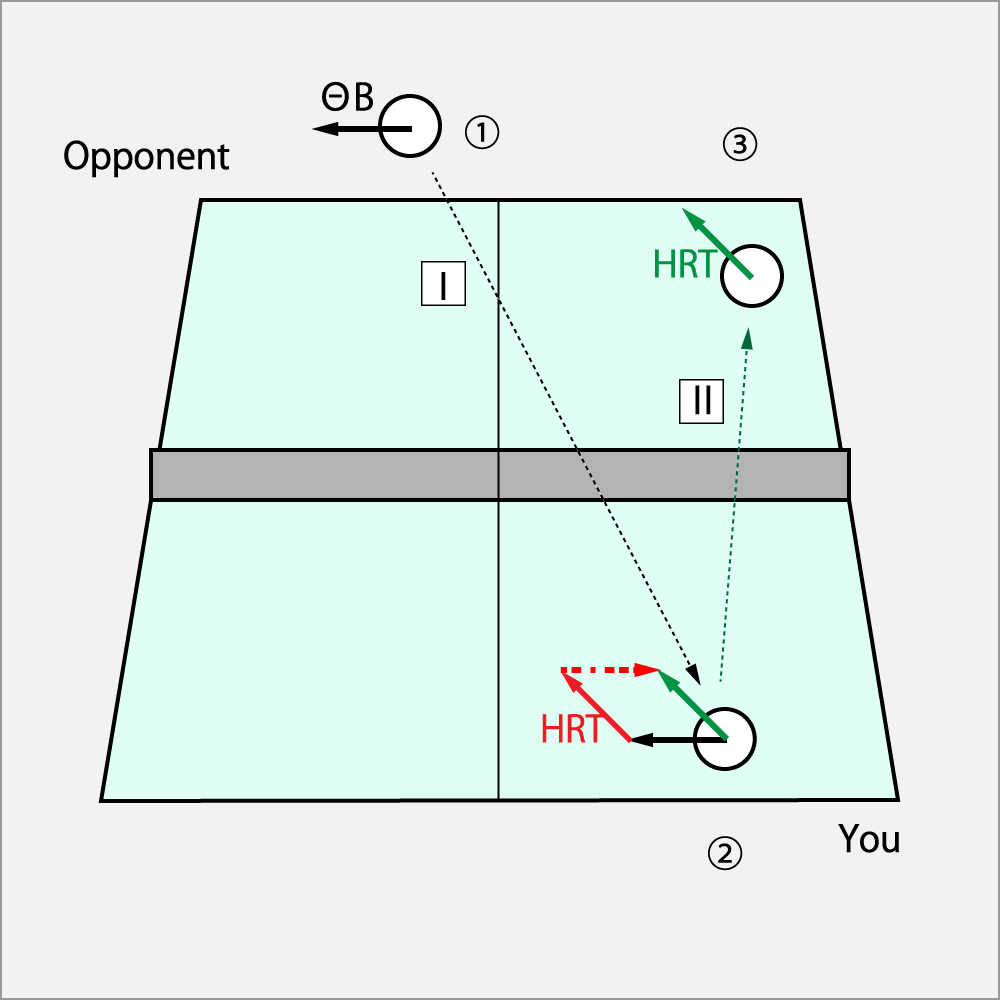
① The opponent rubbed the ball from the backhand side with a strong ΘCut (ΘB).
② You add a Hcork⋅Curve⋅Drive(HRT) to the spin on the trajectory-1 entered your coat.
③ The ball will be returned as a Drive(T) on the trajectory-2 to the opponent's coat.
Swing example. Refer to 3.6.3 Keeping the rally with Choppers: (C) A Offense from Your Fore Swing.
